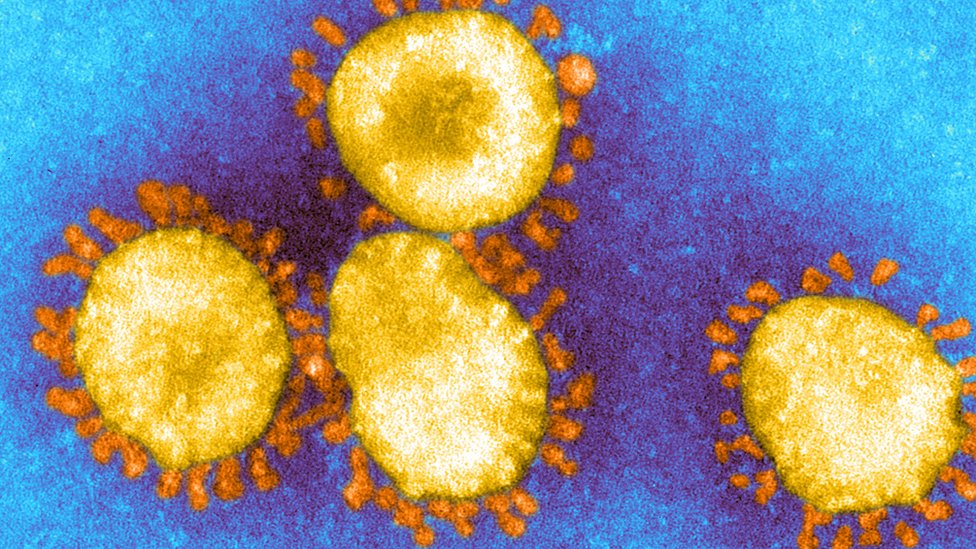
A new variant of the virus causing Covid-19, first spotted in Kent, could already be circulating - or have originated from - outside the UK.
But it was spotted here because of the strength of the UK's surveillance system, scientists have said.
The Covid-19 Genomics Consortium (Cog-UK) has tracked the genetic history of more than 150,000 samples of Sars-Cov-2 virus.
That equates to about half the world's genetic sequencing of coronavirus.
Prof Sharon Peacock, head of Cog-UK, said the UK's high level of genomic surveillance meant "if you're going to find something anywhere, you're going to find it probably here first".
The virus's genetic code is its instruction manual telling it how to operate.
As it replicates, small mistakes or changes get introduced. The useful ones are likely to help the virus spread more quickly from person to person, and so become more common.
Sequencing the virus's genome allows scientists to see how it is changing as it subtly mutates over time, and to uncover how outbreaks spread, by looking at clusters of a particular variant of the virus.
This kind of genetic detective work allowed scientists to work out that the UK's early outbreak in the spring was coming mainly from Europe rather than China, based on the variants that were circulating.
Is it only in the UK?
At the moment, we don't know who the "index case" was - the person from which the mutated version of the virus first emerged.
As a result, we don't know whether the mutation began in Kent or whether it was introduced from elsewhere, Prof Peacock said.
And we don't know whether it has already spread onwards from the UK to other countries.
Prof Tom Connor, who was involved in setting up Covid sequencing in Wales, believes it is "probable" that similar variants are emerging around the world, but they may not have been detected yet.
"We are sequencing in the UK at a disproportionate rate," he said, insisting the UK has a better surveillance system than other countries.
In order to know how far the variant has travelled or where it came from, you would need to compare notes with other countries - but comparable data very often does not exist, Prof Connor said.
For example, Public Health Wales sequenced about 4,000 genomes in the past week, more than the whole of France since the beginning of the pandemic.
This point was emphasised by Prof Ravi Gupta at the University of Cambridge, who pointed out it was "no coincidence" that an "interesting" multiple mutation had also been seen in South Africa, another country which does a lot of genomic sequencing.
Other European countries which were very quick to pick up notable mutations, Denmark and the Netherlands, also have strong surveillance systems.
Why is this mutation different?
The new variant caused alarm because it involved 23 separate mutations, 17 of which were linked to the building blocks of proteins that form the virus.
It's unusual for so many mutations to appear all at once. That makes it less likely they have happened by chance and more likely they give the virus some kind of evolutionary advantage.
"The signal is extremely stark," according to Prof Connor.
"We have a large number of lineages or variants that circulate in the UK and to see one single variant increase in the way it has, with the speed it has, is extremely unusual," he said.
Was Tier 2 too loose?
Questions have been asked over whether more relaxed restrictions in London and the South East caused the rapid spread of the new variant, or whether it was down to human behaviour.
But scientists now have "high confidence" the mutation itself has made the virus more transmissible - though not more deadly.
Prof Judith Breuer, professor of virology and co-director of the division of infection and immunity at University College London, said it could have been down to changes in behaviour alone, but "all of that has now been accounted for".
Instead, she said, increased transmissibility of the new variant was likely to be down to "biological changes to the virus".
That's not to say behaviour doesn't matter though - it continues to be a virus that thrives on human contact and social distancing remains the main - though blunt - tool for managing its spread.
https://news.google.com/__i/rss/rd/articles/CBMiKmh0dHBzOi8vd3d3LmJiYy5jby51ay9uZXdzL2hlYWx0aC01NTQxMzY2NtIBLmh0dHBzOi8vd3d3LmJiYy5jby51ay9uZXdzL2FtcC9oZWFsdGgtNTU0MTM2NjY?oc=5
2020-12-22 17:14:00Z
CBMiKmh0dHBzOi8vd3d3LmJiYy5jby51ay9uZXdzL2hlYWx0aC01NTQxMzY2NtIBLmh0dHBzOi8vd3d3LmJiYy5jby51ay9uZXdzL2FtcC9oZWFsdGgtNTU0MTM2NjY
Tidak ada komentar:
Posting Komentar